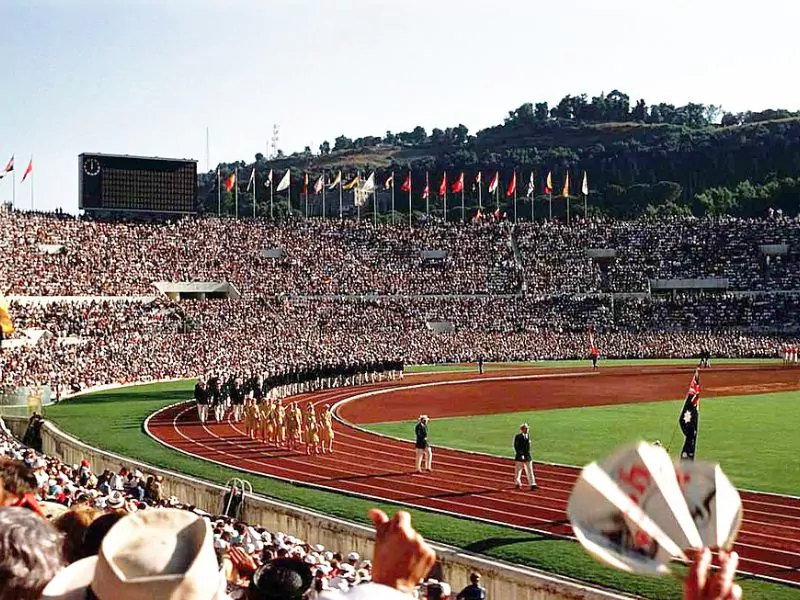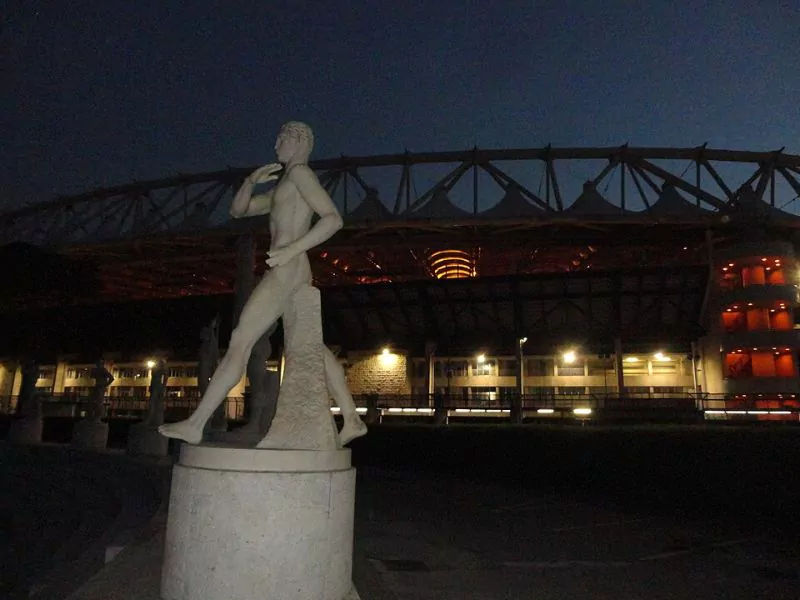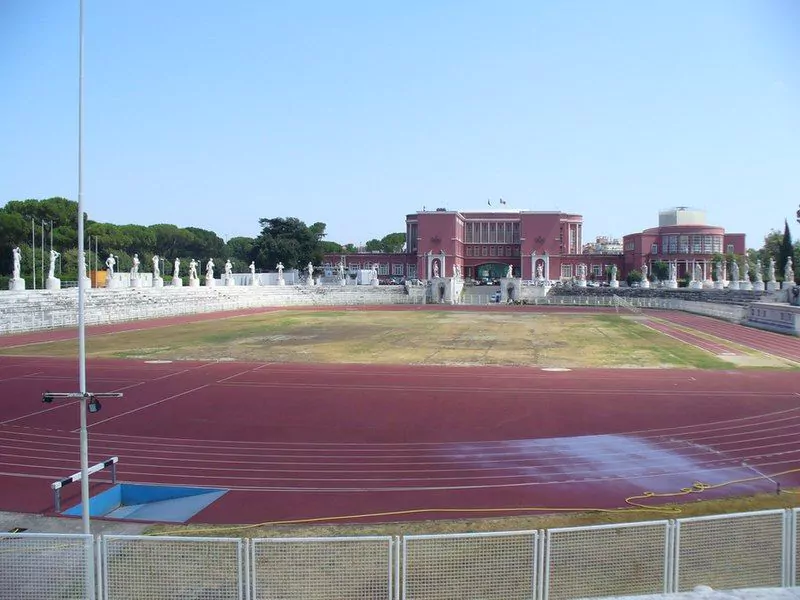🏟️ Introduction
In Rome, even stadiums come with personality. And what a personality it is! The Stadio Olimpico di Roma isn’t just a venue—it’s a living monument of sweat, cheers, flags, and memories. Whether you’re shouting for Roma, Lazio, Italy’s national rugby team, or Vasco Rossi’s encore, the Olimpico stands proud as the city’s thunder dome of passion.
Ready to impress your friends, guides, or your own curiosity? Let’s explore 9 + 1 super fun facts about this legendary arena that’s far more than just concrete and seats.
1. It’s Had Three Names and Three Eras

Originally opened in 1932 as the Stadio dei Cipressi, it became Stadio dei Centomila once its capacity reached 100,000. But the name that stuck—Stadio Olimpico—came in 1960, just in time for the Rome Olympic Games. Same bones, different identity each time.
2. Built on a Marsh—Seriously
The stadium was constructed on former Tiber River wetlands. To make it solid ground, engineers dumped two million cubic meters of earth, raising the pitch level nearly 4 meters. Before eco-engineering was cool, Olimpico was already doing the groundwork.
3. One Stadium, Two Giants
It’s one of the rare football cathedrals in Europe where two rival teams share the same home turf: AS Roma and SS Lazio. Every “Derby della Capitale” becomes a civil war in cleats—with both teams defending their end of the city in the same amphitheater.
4. The Roof Came Late to the Party

Until 1990, only the Monte Mario stand had any real cover. When Italy hosted the World Cup that year, the Olimpico was fitted with its now-iconic oval roof. It not only gave shade—it gave the stadium a new voice, echoing the chants and claps like a modern-day Colosseum.
5. Record Attendance? It’s Not What You’d Expect
You might think it was a final or derby, but no: the attendance record is 78,886 fans during a Lazio vs. Foggia match in 1974. Proof that Roman fans don’t need a glamorous opponent—just an excuse to show up in full voice.
6. A Star-Studded History of Events
Olimpico has hosted nearly every major sports final imaginable:
- The 1960 Olympic Games opening and track events
- UEFA EURO finals in 1968 and 1980
- The 1990 World Cup Final
- Champions League finals in 1996 and 2009
- And the EURO 2020 (played in 2021) opener!
Few stadiums can match that résumé. It’s basically the Meryl Streep of arenas.
7. Rock Gods Welcome Too
Italy’s musical royalty loves the Olimpico. The first Italian artist to perform there was Zucchero in 1993, but the true rock king is Vasco Rossi, who’s performed 23 times—he basically owns a seat in every section.
8. Beyond Football: Athletics and Rugby Reign Too
Since 2012, the Italian national rugby team calls the Olimpico home during the Six Nations. The stadium also hosts the Golden Gala Pietro Mennea, a leg of the Diamond League, where sprinters often shatter records under the Roman stars. It’s a field of dreams—and legs.
9. The Scoreboards Are Retro Royalty

The two massive scoreboards in Curva Nord and Curva Sud were installed in 1959 and have become iconic visual anchors. They’re essentially vintage big screens—Rome’s original JumboTrons with a timeless look.
+1. Yes, There’s a Walk of Fame
Just outside, along Viale delle Olimpiadi, lies Italy’s Walk of Fame of Sport. With over 100 marble plaques honoring legendary athletes, it’s Rome’s answer to Hollywood Boulevard—with more cleats and fewer sunglasses. And it’s still growing, just like the legends it celebrates.
🎯 Final Whistle: More Than Just a Stadium
The Stadio Olimpico di Roma is a sensory experience. It’s not just where you watch a game or a show—it’s where you feel the city breathe. From the steely chants of the Curva Sud to the dramatic swells of the Champions League anthem, from sprinters pounding the track to fans bouncing during encore after encore, the Olimpico is where marble becomes memory.
Next time you visit Rome, skip just admiring the ruins—go scream inside one that’s still alive.
